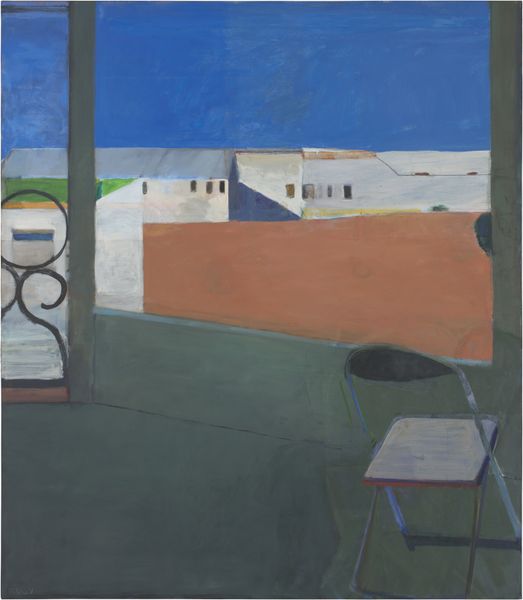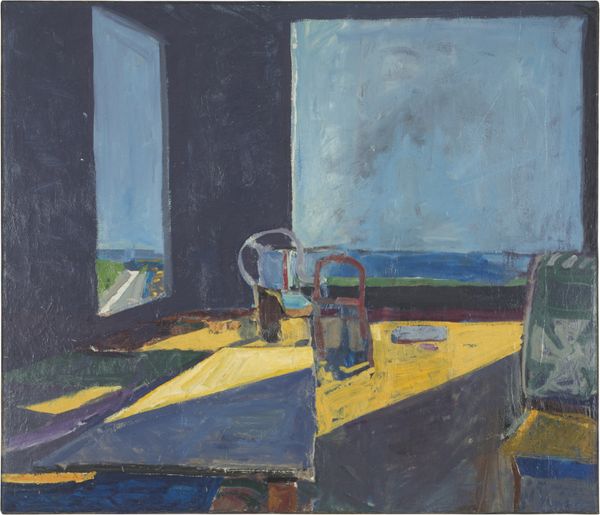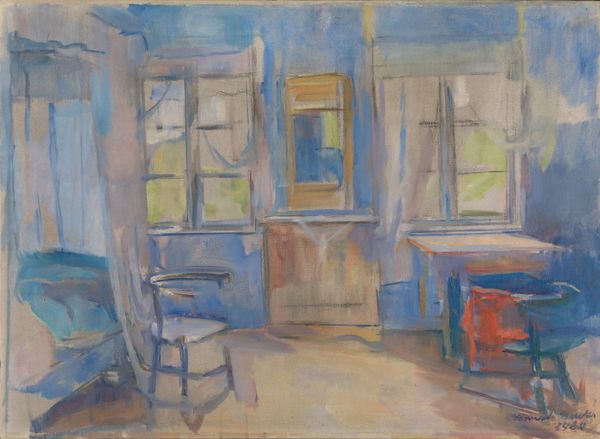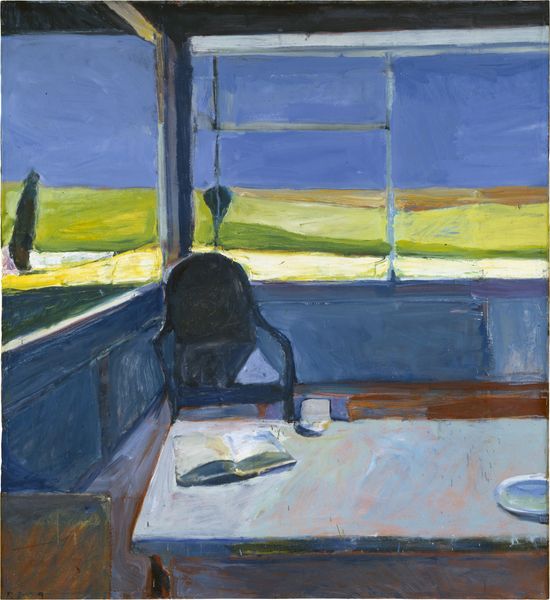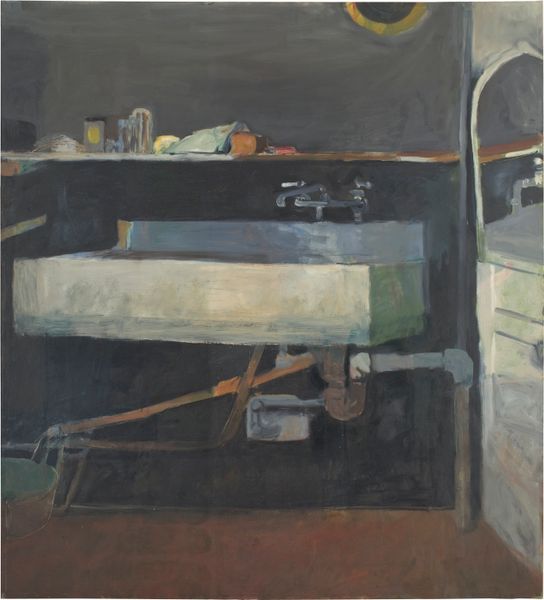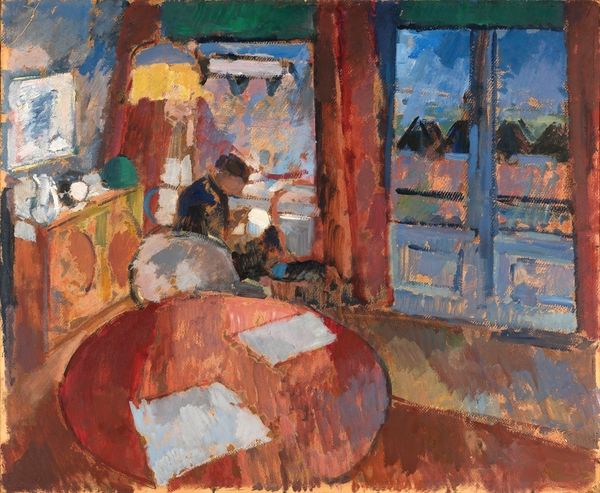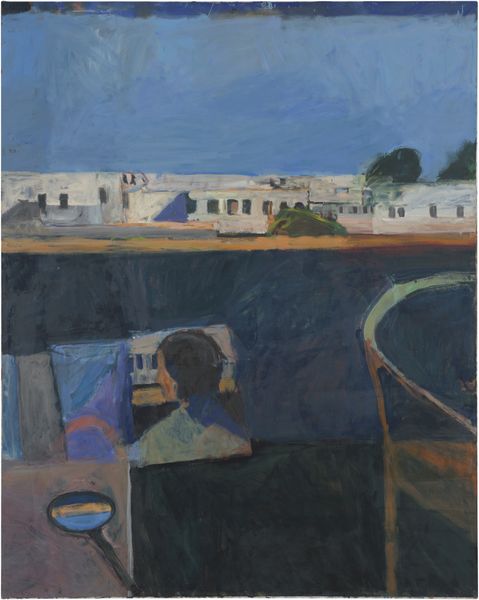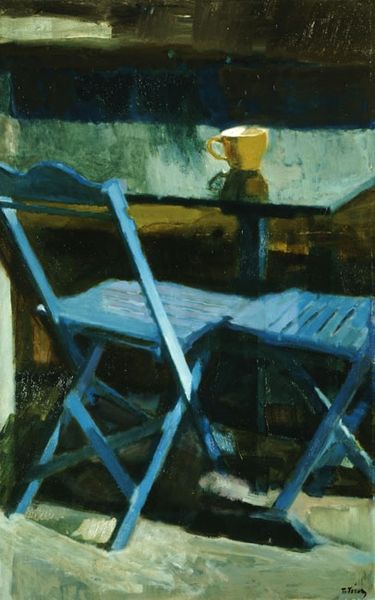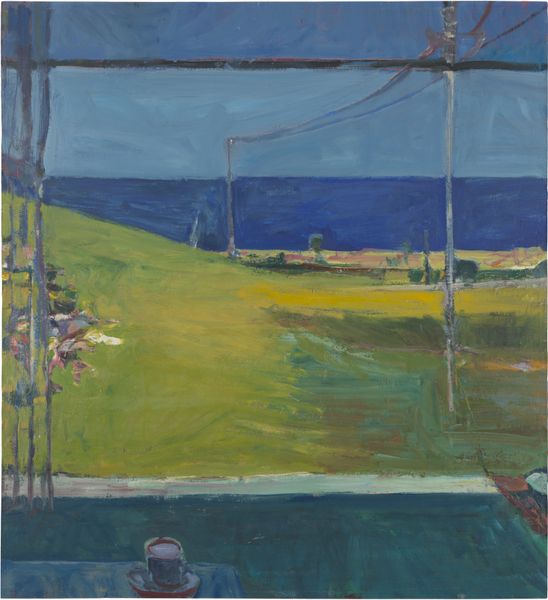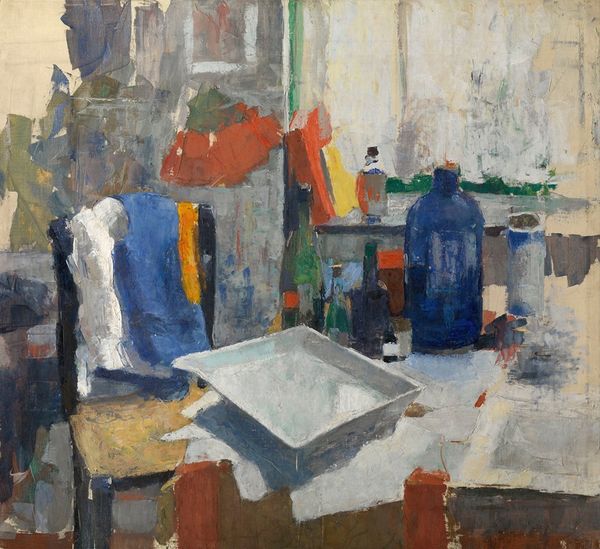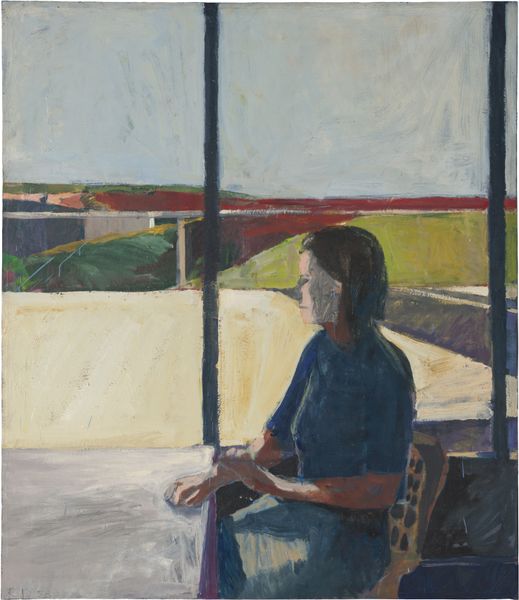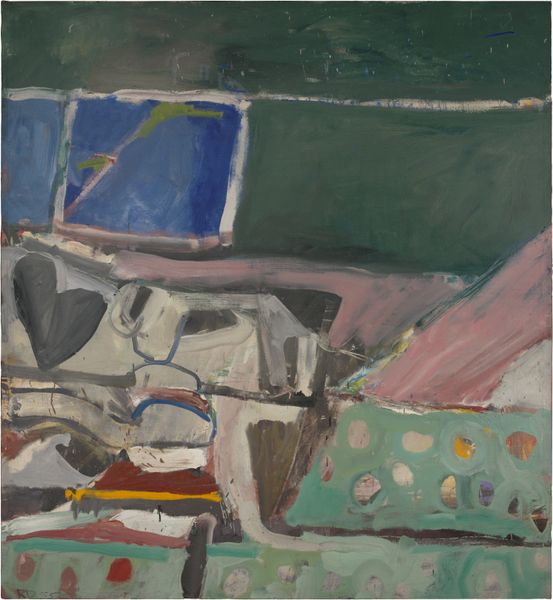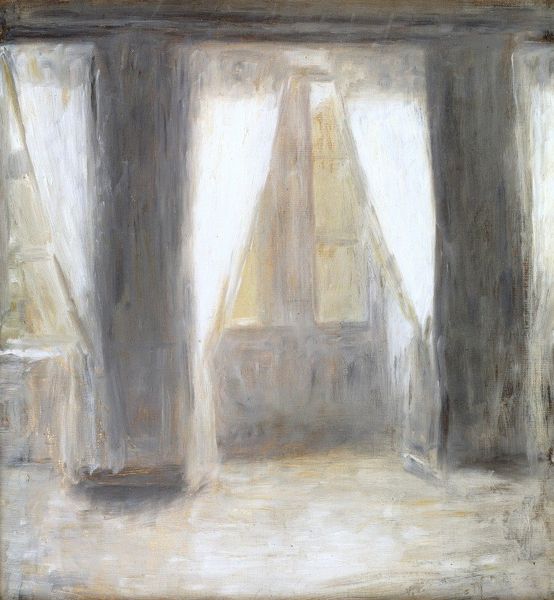
#
bay-area-figurative-movement
Dimensions: 178.8 x 151.1 cm
Copyright: Richard Diebenkorn Foundation
Curator: Let's consider Richard Diebenkorn’s "Interior with Doorway," an oil on canvas completed in 1962. It strikes me as a visual articulation of in-between spaces, both literal and figurative. The threshold is painted with such palpable tension; I find myself pondering questions of access and exclusion. Editor: My first thought? A melancholy waiting room. It has this eerie, still feeling. Like the quiet before a storm, or maybe the aftermath. The light filtering in feels distant. That lone chair... does it feel lonely to you, too? Curator: I'm glad you mentioned that loneliness because when viewing this work through the lens of post-war American society, a prevailing sense of alienation becomes really prominent. There's the interior, almost claustrophobic, countered by the exterior promising some kind of freedom. Editor: Exactly! It's as if someone paused, just for a moment, catching a breath, trying to make a decision, what is beyond that door... The colours are muted and thick, like looking through fog. It looks plein-air; it's funny, it has the stillness of an Hopper’s landscape painting but a sense of abstraction, almost as if something needs to be expressed more then it has to be seen... Curator: I agree entirely. This painting sits at a crucial juncture within Diebenkorn’s trajectory. Prior to this piece, he was largely occupied with pure abstraction, yet here, elements of figuration re-emerge and give the viewer space for questions... Is this the artist home? An actual street corner he painted from nature? We are left with uncertainty. Editor: And yet it’s also such a human moment, don’t you think? That quiet contemplation; we've all stood there in the doorway, right? Lingering. Uncertain about stepping into what comes next. Perhaps it could be considered the most political attitude possible—uncertainty. Curator: An elegant provocation! Indeed, this doorway functions as a threshold onto complex social and political questions inherent to any epoch. Editor: Looking at it now, I wonder how Diebenkorn himself was at a point of no return, not in the landscape nor in pure abstraction... like us, viewers, he's there in-between. Curator: Thank you, this really helped crystallize what I appreciate in this painting and artist. It seems what endures most is Diebenkorn’s ability to invite continued reflections and personal engagement with our contemporary moment. Editor: It does feel special in that way. And isn't it nice to find that the art it's good if we, as viewers, stand with the artist? And even more if we can linger there for a little longer.
Comments
No comments
Be the first to comment and join the conversation on the ultimate creative platform.
